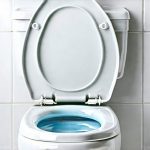Flow delay – that frustrating feeling when you’re trying to enjoy an outing but spend more time waiting than doing – is a common experience for many people. It’s the gap between intention and execution, the minutes (or even hours!) lost to indecision, logistical hurdles, or simply being unprepared. This isn’t just about wasted time; it impacts our enjoyment, increases stress levels, and can ultimately make us less likely to engage in activities we genuinely want to do. Recognizing that flow delay is a pervasive issue is the first step toward mitigating its effects and reclaiming your leisure time.
The root causes of flow delay are multifaceted. They range from internal factors like perfectionism, anxiety about making the “right” choice, or difficulty prioritizing, to external ones like poorly planned logistics, unexpected delays, or overwhelming options. Often it’s a combination of both. This article will explore practical strategies for reducing flow delay before, during, and after public outings, enabling you to maximize enjoyment and minimize frustration. We’ll focus on actionable techniques that address the common culprits behind this pervasive issue, helping you transition from hesitant planning to seamless experiences.
Proactive Planning: The Foundation of Smooth Outings
Effective planning isn’t about rigidly scheduling every minute; it’s about reducing decision fatigue and anticipating potential roadblocks. Many people fall into the trap of believing spontaneity is key to fun, but for those prone to flow delay, a degree of pre-planning can be liberating. It allows you to enter an outing with confidence and reduces the likelihood of getting stuck in analysis paralysis when faced with choices on the spot. Think of it as building a framework that supports enjoyment, rather than restricting it.
A key element of proactive planning is defining your intentions clearly. What do you want to achieve during this outing? Is it relaxation, exploration, connection with friends, or something else entirely? Knowing your goal helps narrow down options and make informed decisions. For example, if the intention is relaxation, a bustling shopping mall might not be the best choice. Also, consider creating a basic itinerary – even just listing potential activities or restaurants – can significantly streamline the process when you’re on the go. If anxiety plays a role, exploring strategies for reducing flow anxiety might be helpful before you even begin planning.
Finally, don’t underestimate the power of packing and preparation. Laying out clothes the night before, ensuring tickets are purchased online, confirming reservations, and having necessary items (phone charger, water bottle, sunscreen) readily available all contribute to a smoother start and minimize last-minute scrambling. This isn’t about becoming overly obsessive; it’s about removing common sources of delay and allowing you to focus on enjoying the experience itself.
Minimizing Decision Fatigue
Decision fatigue is real – the more choices we face, the harder it becomes to make even simple ones. This can be particularly pronounced during outings where there are endless possibilities for what to do or where to go. To combat this:
- Limit options: Before you leave, narrow down your choices to a manageable number. Instead of saying “Let’s see what we feel like doing,” have 2-3 potential activities in mind.
- Pre-select restaurants: If dining out is part of the plan, research and choose a restaurant beforehand. Having a backup option is wise, but avoid endlessly scrolling through menus while hungry.
- Utilize pre-determined routes: For transportation, use GPS or public transit apps to plan your route in advance. This saves time and reduces stress associated with navigating unfamiliar areas.
The Power of “Good Enough”
Perfectionism can be a major contributor to flow delay. We often get caught up trying to find the absolute best option, even when the differences between choices are negligible. Learning to embrace “good enough” is crucial for streamlining your outings. This means accepting that you don’t need the most highly-rated restaurant or the perfect parking spot – a reasonably good option will suffice.
This isn’t about settling for mediocrity; it’s about recognizing that chasing perfection often leads to wasted time and diminished enjoyment. Remind yourself that the goal is to have fun, not to achieve optimal outcomes in every aspect of the outing. A slightly imperfect experience can still be incredibly enjoyable if you shift your focus away from striving for flawlessness. Sometimes a mental reset can help refocus efforts.
Anticipating and Mitigating Potential Delays
Unexpected delays are inevitable, but anticipating them allows you to prepare and minimize their impact. Consider potential disruptions like traffic congestion, long lines, or unforeseen closures.
- Check traffic conditions: Before leaving, use a navigation app to assess traffic patterns and adjust your departure time accordingly.
- Allow buffer time: Build extra time into your schedule for unexpected delays. This reduces stress and prevents you from feeling rushed.
- Have contingency plans: If your initial plan falls through (e.g., a restaurant is closed), have alternative options ready to go. Planning for these scenarios can also help reduce flow fatigue.
Understanding how external factors impact your personal flow is crucial, and even considering a flow window can help create more predictable routines.
Ultimately, reducing flow delay requires self-awareness, proactive planning, and a willingness to embrace imperfection. By implementing these strategies, you can transform hesitant planning into seamless experiences and reclaim your leisure time. Learning to balance energy and stillness is also vital for maintaining a consistent sense of calm.





















